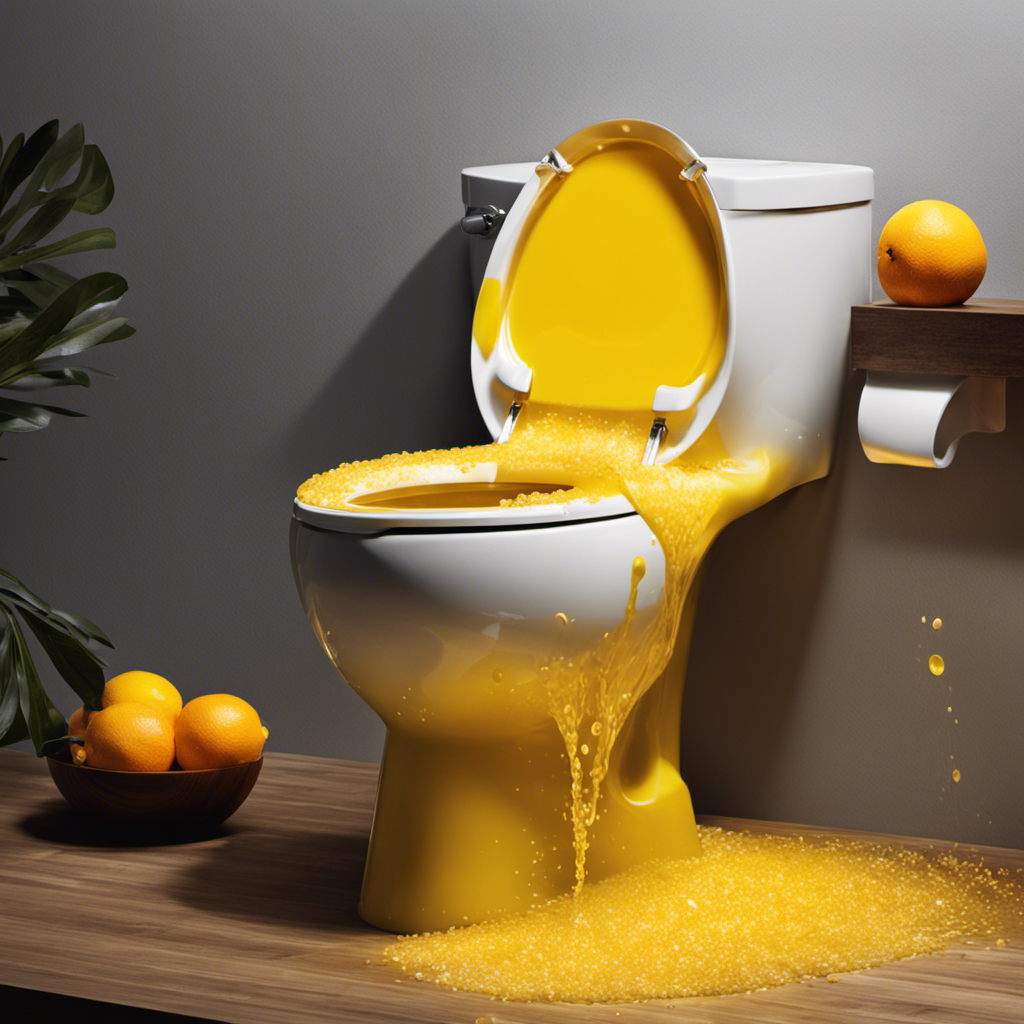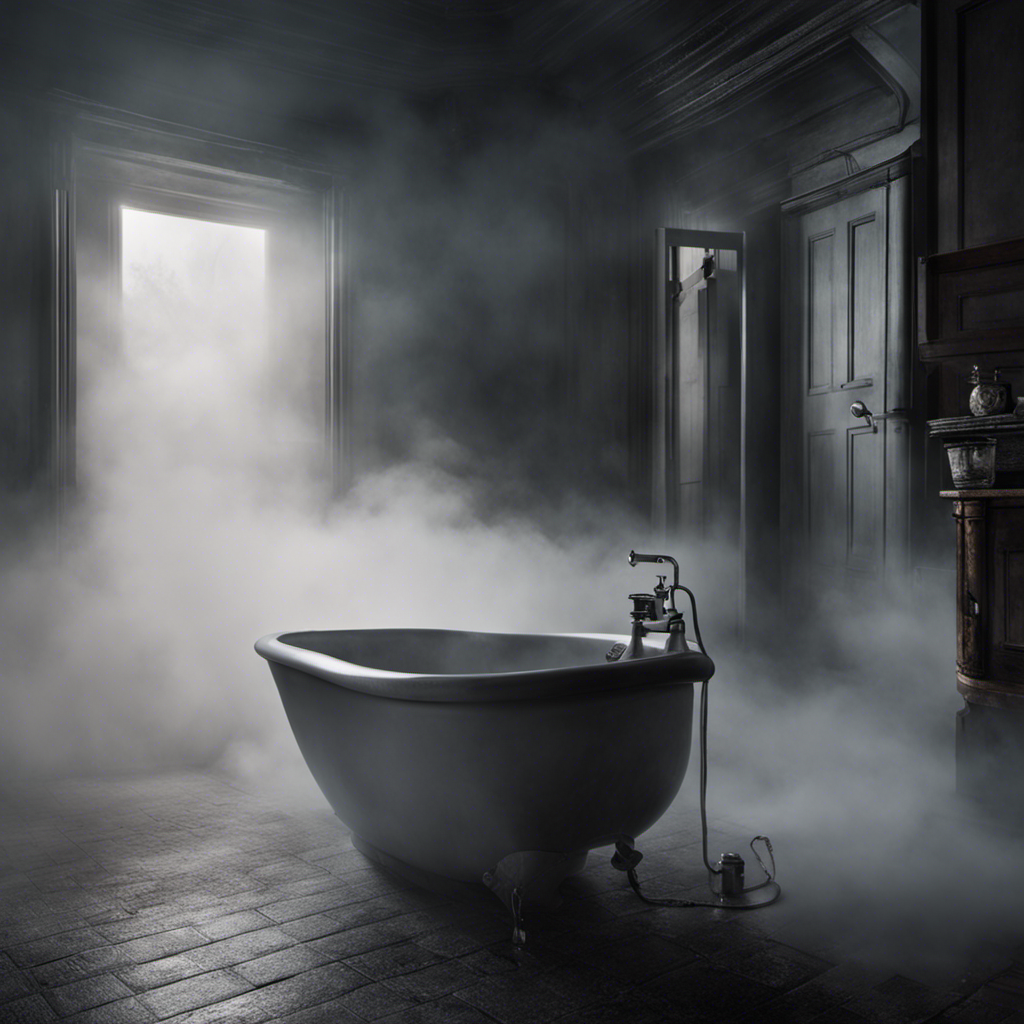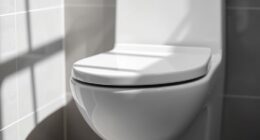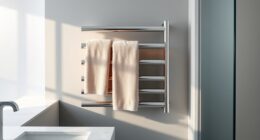Did you know that over 50% of households struggle with toilet mold? If you’re dealing with this pesky problem, don’t worry, we’ve got you covered.
In this article, we will guide you through the process of getting rid of toilet mold once and for all. From understanding the causes to effective cleaning methods and prevention techniques, we’ll provide you with all the knowledge and tips you need to keep your bathroom mold-free.
So, let’s dive in and say goodbye to that unsightly mold!
Key Takeaways
- Toilet mold is caused by moisture and poor ventilation.
- Mold thrives in damp and humid environments.
- Regular inspection and prompt action are necessary to prevent mold growth.
- Effective cleaning methods include using vinegar and water or a baking soda paste to remove mold.
Understanding the Causes of Toilet Mold
Toilet mold can be caused by a combination of moisture and poor ventilation. Mold thrives in damp and humid environments, which are commonly found in bathrooms. When moisture is trapped and there is inadequate airflow, mold spores can quickly multiply and colonize on surfaces such as toilet bowls, tanks, and walls.
The main sources of moisture include leaking pipes, condensation, and high humidity levels. In addition to the causes of mold, it is important to understand the health risks associated with it. Mold releases spores into the air, which can trigger allergic reactions and respiratory problems in sensitive individuals. Prolonged exposure to mold can also lead to more severe health issues, such as asthma and lung infections.
Therefore, it is crucial to address toilet mold promptly to prevent further health complications.
Identifying and Assessing Toilet Mold Growth
First, you’ll want to examine your bathroom for any signs of mold growth. This includes looking for dark spots or discoloration in the corners or on the walls near the shower. Identifying and assessing toilet mold growth is crucial for toilet mold prevention and understanding the health risks associated with it.
Toilet mold can thrive in moist and warm environments, making your bathroom an ideal breeding ground. Not only does it create an unsightly appearance, but it can also pose serious health risks. Mold releases spores that can irritate the respiratory system and cause allergic reactions. Prolonged exposure to mold can lead to more severe health issues, such as respiratory infections or asthma.
Therefore, it is essential to regularly inspect your bathroom for any signs of mold growth and take prompt action to prevent its occurrence.
Effective Cleaning Methods for Toilet Mold Removal
After identifying and assessing the presence of mold in your bathroom, it’s important to use effective cleaning methods for its removal.
To prevent toilet mold from recurring, there are a few tips you can follow. First, make sure your bathroom is well-ventilated to reduce moisture levels. Keep the bathroom door open or use a fan to circulate air.
Additionally, regularly clean and dry your toilet bowl and tank to prevent mold growth.
When it comes to removing toilet mold, natural remedies can be highly effective. Mix equal parts vinegar and water in a spray bottle and spray the affected areas. Let it sit for a few minutes, then scrub with a brush.
Another natural solution is to use a paste made of baking soda and water. Apply the paste to the moldy areas, let it sit for a while, then scrub and rinse.
Remember to wear gloves and use proper ventilation when using these cleaning methods.
Preventing Toilet Mold From Coming Back
To prevent the recurrence of mold in your bathroom, it’s essential to maintain proper ventilation and regularly clean and dry all surfaces.
Mold thrives in damp and humid environments, so taking preventive measures is crucial for long-term solutions. Here are three effective ways to prevent toilet mold:
- Use a bathroom exhaust fan or open a window to improve air circulation and reduce moisture buildup.
- Wipe down the toilet and surrounding areas regularly with a disinfectant cleaner to remove any existing mold spores.
- Keep the bathroom dry by using a squeegee or towel to remove excess moisture after showering or using the toilet.
By incorporating these practices into your cleaning routine, you can significantly reduce the risk of toilet mold.
Additional Tips and Tricks for Dealing With Toilet Mold
One effective way to prevent the recurrence of bathroom mold is by using a dehumidifier to reduce moisture levels in the air.
However, there are a few common misconceptions about preventing toilet mold that you should be aware of.
First, many people believe that natural remedies, such as vinegar or tea tree oil, are enough to get rid of mold. While these remedies may help to some extent, they are not as effective as using commercial mold cleaners.
Additionally, it is important to remember that prevention is key when it comes to mold. Regularly cleaning and drying your bathroom, ensuring proper ventilation, and fixing any leaks or water damage can go a long way in preventing mold growth.
Conclusion
Congratulations! You’ve successfully learned how to bid farewell to that pesky toilet mold. By understanding the causes and identifying the growth, you became a mold detective.
Armed with effective cleaning methods, you tackled the mold head-on, leaving your toilet sparkling and mold-free.
But the battle doesn’t end there! Remember to implement preventive measures to keep the mold from making a comeback.
With these tips and tricks, you are now equipped to handle any mold situation like a pro! So go forth and conquer that mold, my friend.










